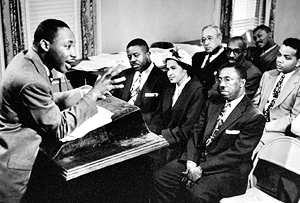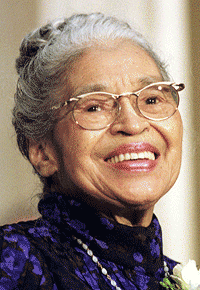Rosa Parks: Civil Rights Pioneer
Part 2: Later Life and Fame One of the main results of Rosa's arrest and conviction was the attention the events involving her got from around the country. Rosa Parks by this time was a very famous person. She worked tirelessly to promote the cause of civil rights. In the early 1960s, she moved to Detroit and eventually worked on the staff of John Conyers, who represented Michigan in the House of Representatives. She worked for him from 1965 to 1988, when she retired from public life altogether. She was still an activist for civil rights. She took part in the Selma-to-Montgomery marches in March 1965 and later said that she revered the methods of both King and Malcolm X. In 1999, she received the Congressional Gold Medal. This award is given by Congress to "any individual who performs an outstanding deed or act of service to the security, prosperity, and national interest of the United States of America." It is considered the Legislative Branch equivalent of the Presidential Medal of Freedom.
She died in 2005. She was the first woman ever to lie in state at the U.S. Capitol. A statue of her will soon appear in the Capitol. She continues to be an inspiration for people everywhere. First page > Her Early Life > Page 1, 2 |
|
Social Studies for Kids
copyright 2002–2025
David White


 and even got the Supreme Court's attention. The Court ruled in 1956 that segregation (separation based on race) on city buses was unconstitutional. One of the first things Rosa Parks did after this ruling was get on a Montgomery city bus. She sat right up front.
and even got the Supreme Court's attention. The Court ruled in 1956 that segregation (separation based on race) on city buses was unconstitutional. One of the first things Rosa Parks did after this ruling was get on a Montgomery city bus. She sat right up front. In 2001, the city of Montgomery opened the Rosa Parks Library and Museum, which traces her story and its place in the struggle for equality. The museum is on the same spot where Rosa was arrested in 1955.
In 2001, the city of Montgomery opened the Rosa Parks Library and Museum, which traces her story and its place in the struggle for equality. The museum is on the same spot where Rosa was arrested in 1955.
